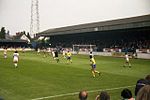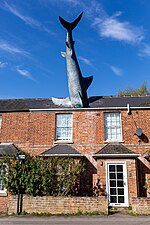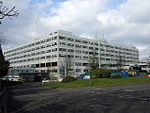St Andrew's Church, Headington
12th-century church buildings in England12th-century establishments in EnglandAnglo-Catholic church buildings in OxfordshireChurch of England church buildings in OxfordEnglish churches with Norman architecture ... and 2 more
Grade II listed buildings in OxfordGrade II listed churches in Oxfordshire

St Andrew's Church, Headington is a Church of England parish church in the village of Old Headington, Oxfordshire, England, now absorbed as part of the suburb of Headington in the city of Oxford. The church building is located in St Andrew's Road. It is a Grade II* listed building.
Excerpt from the Wikipedia article St Andrew's Church, Headington (License: CC BY-SA 3.0, Authors, Images).St Andrew's Church, Headington
St. Andrew's Road, Oxford Headington
Geographical coordinates (GPS) Address Website External links Nearby Places Show on map
Geographical coordinates (GPS)
| Latitude | Longitude |
|---|---|
| N 51.764777777778 ° | E -1.2121944444444 ° |
Address
St Andrew's Church (Saint Andrew's Church)
St. Andrew's Road
OX3 9DL Oxford, Headington
England, United Kingdom
Open on Google Maps







